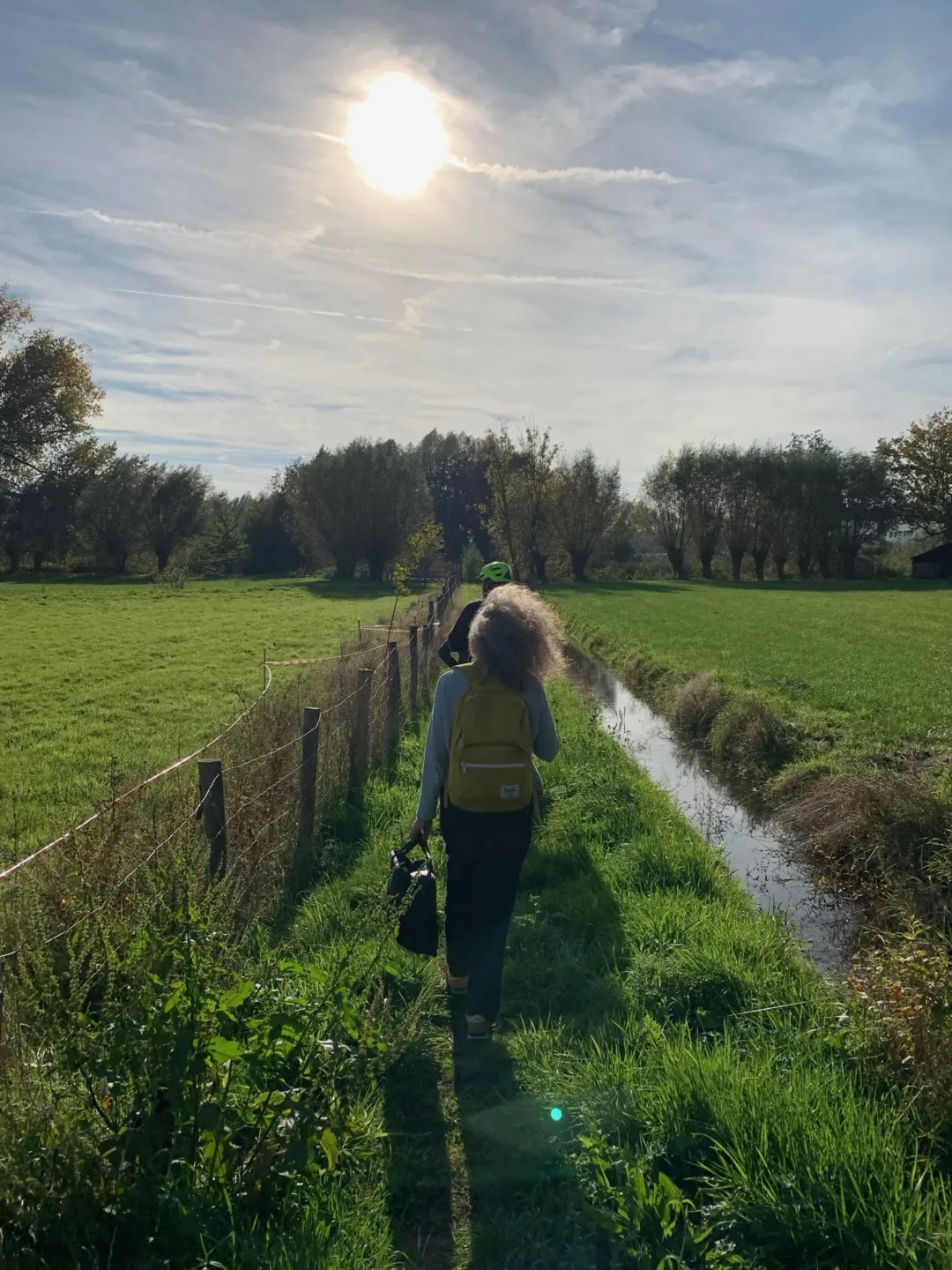
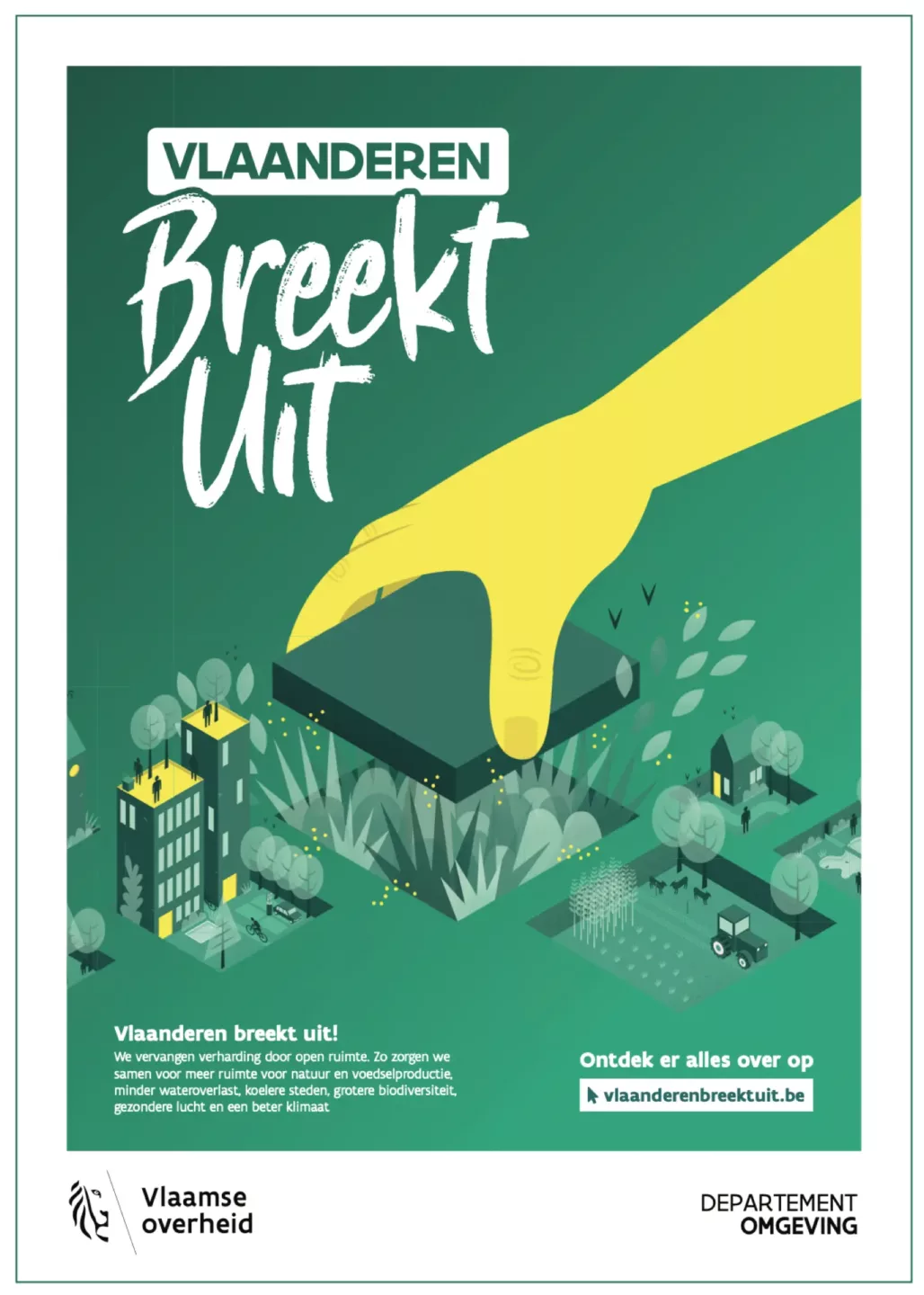
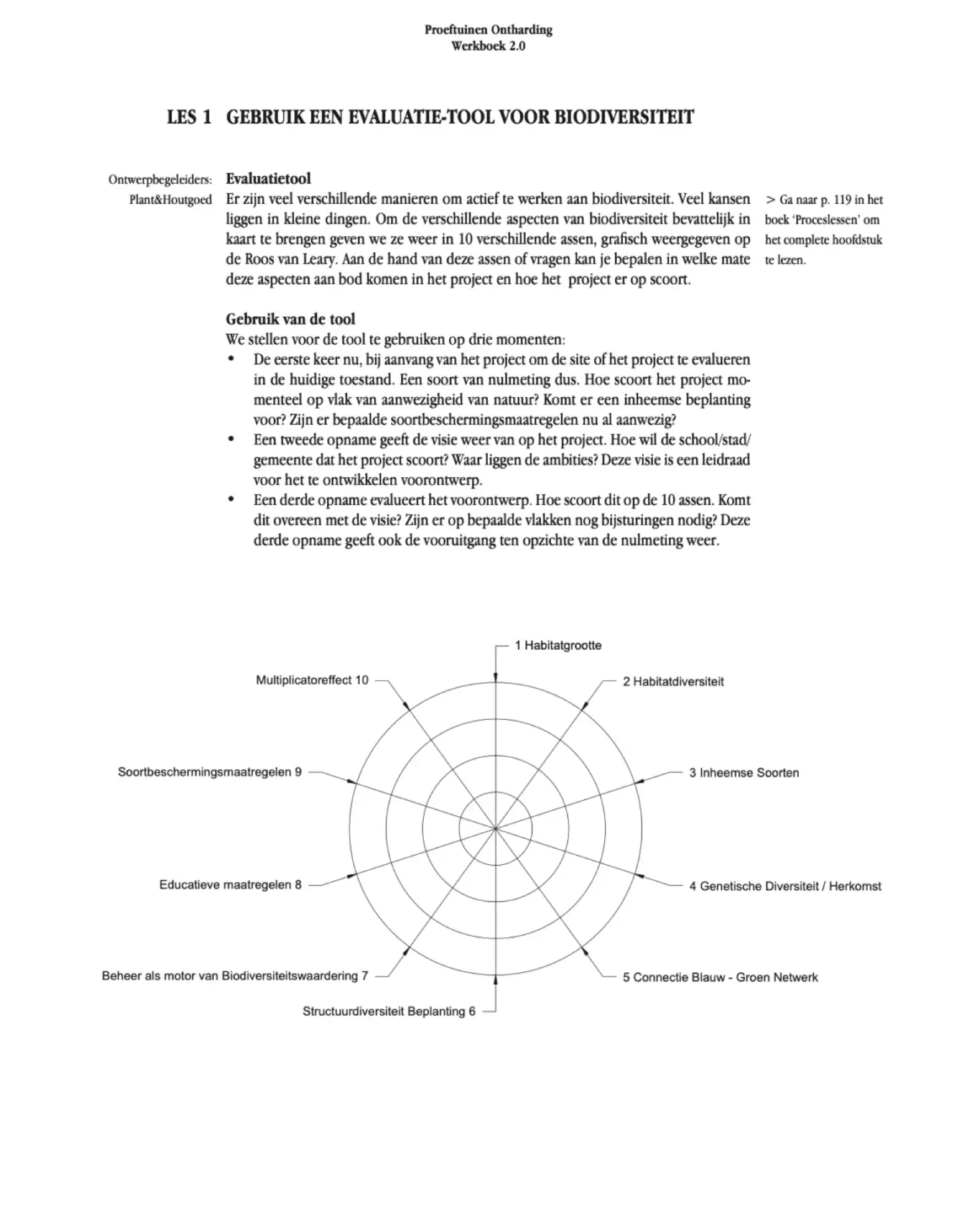
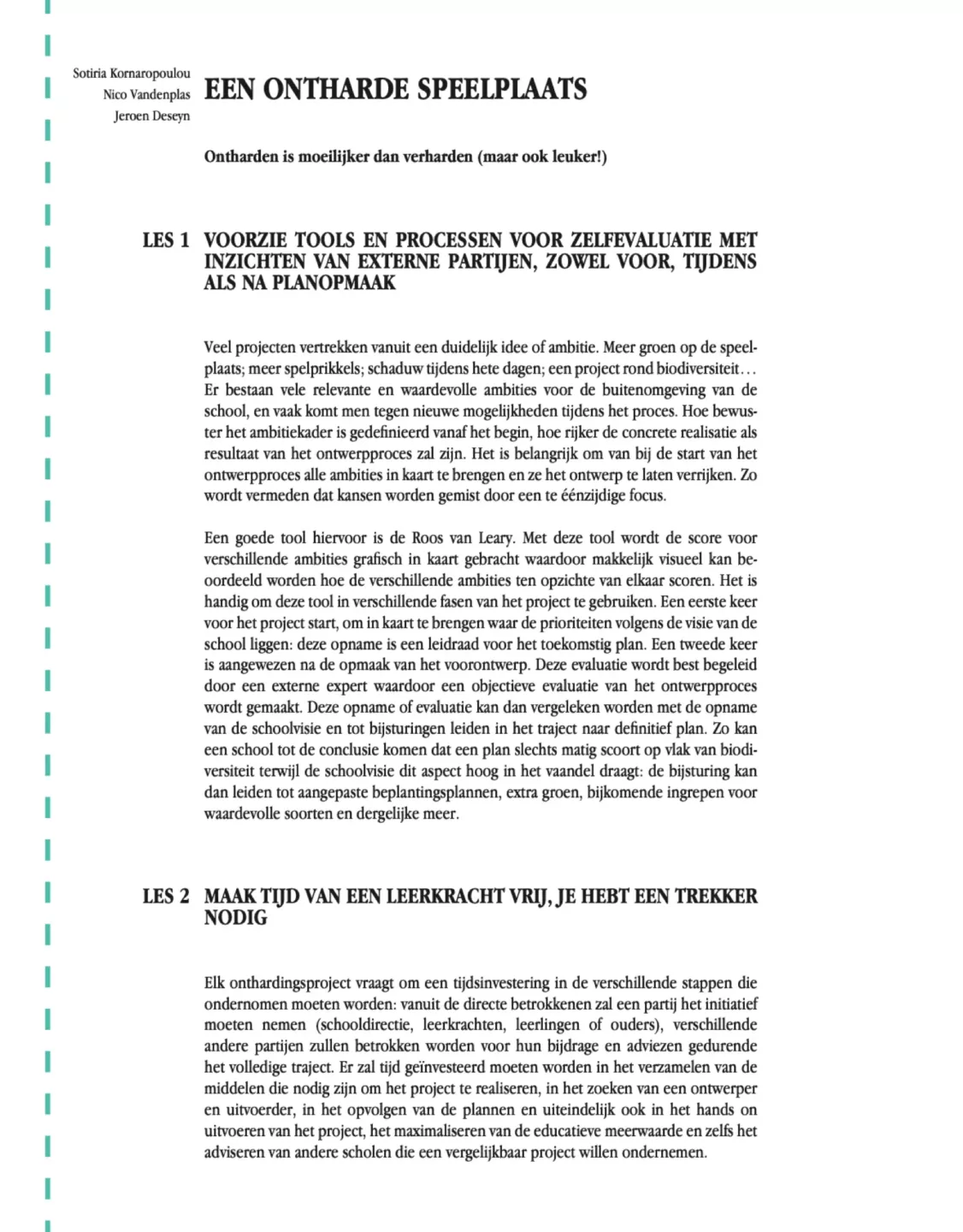
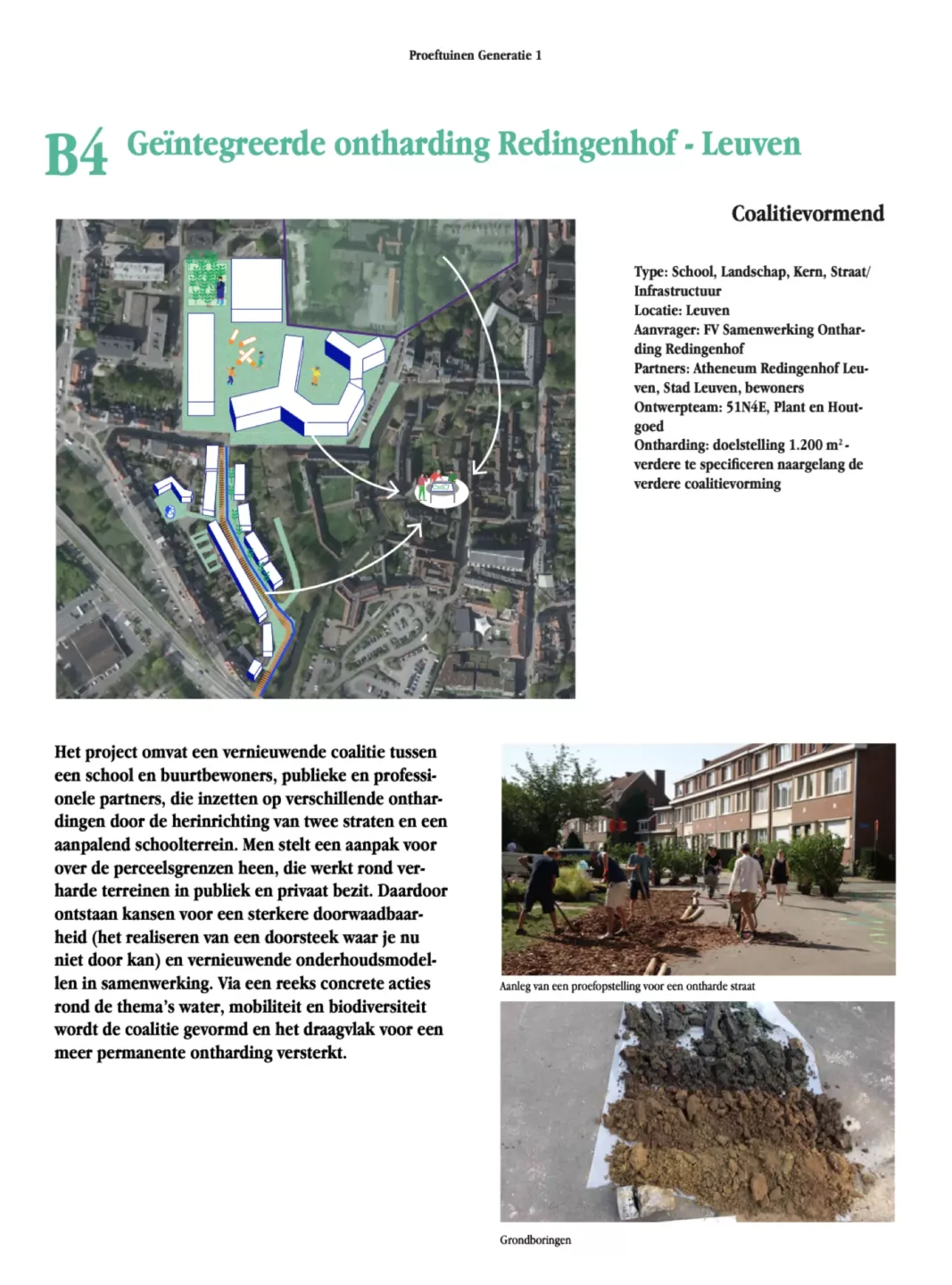
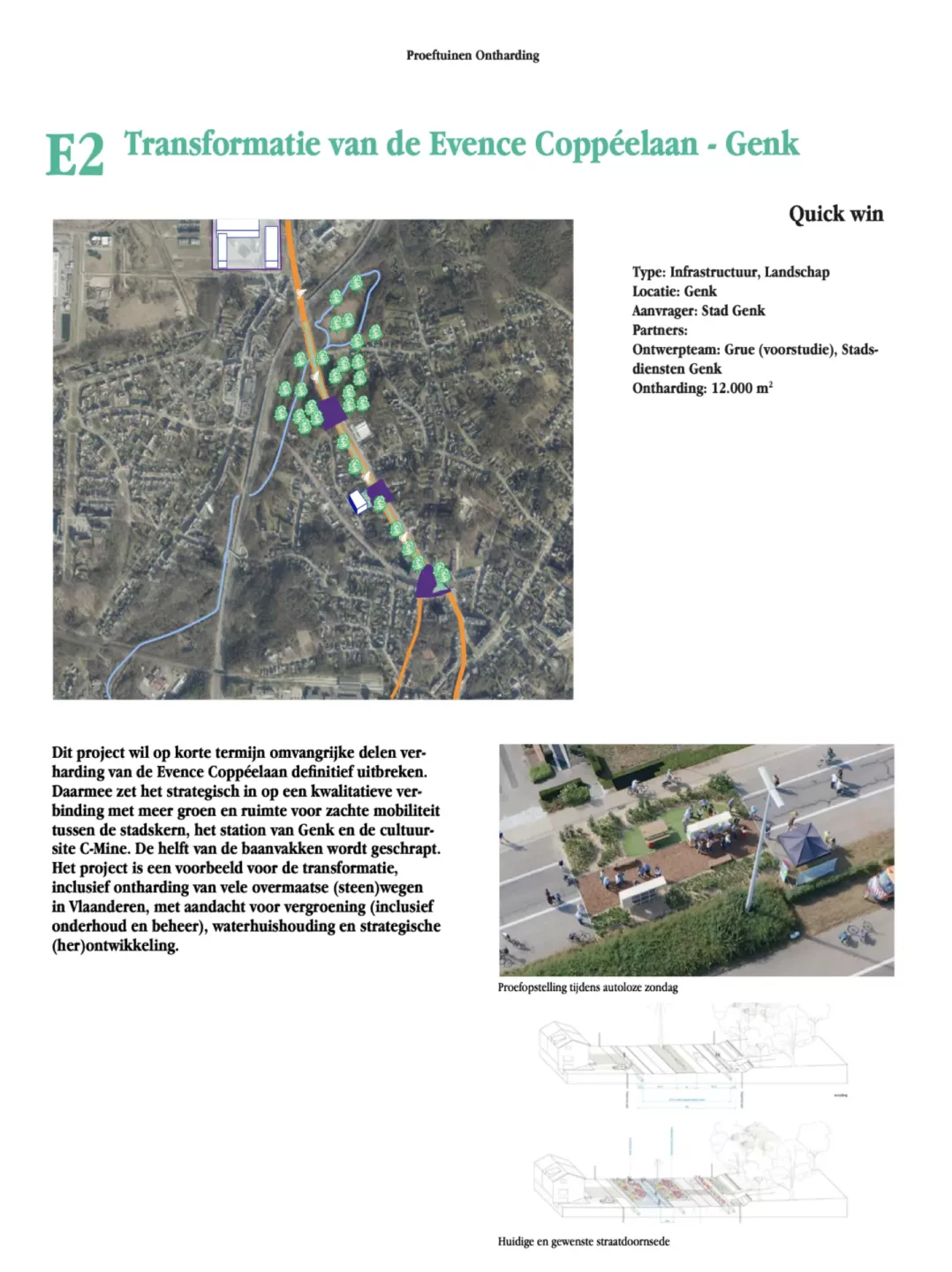
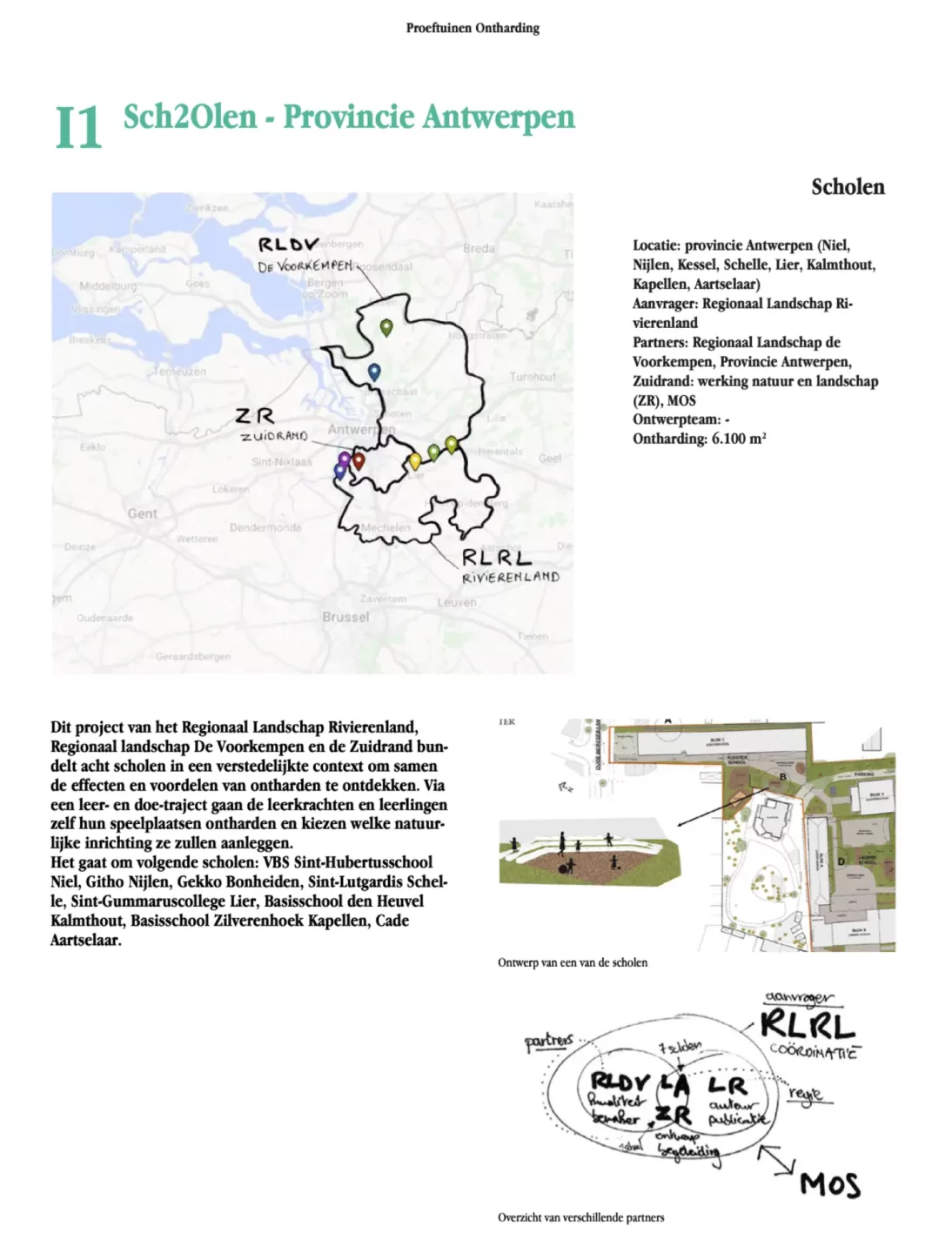
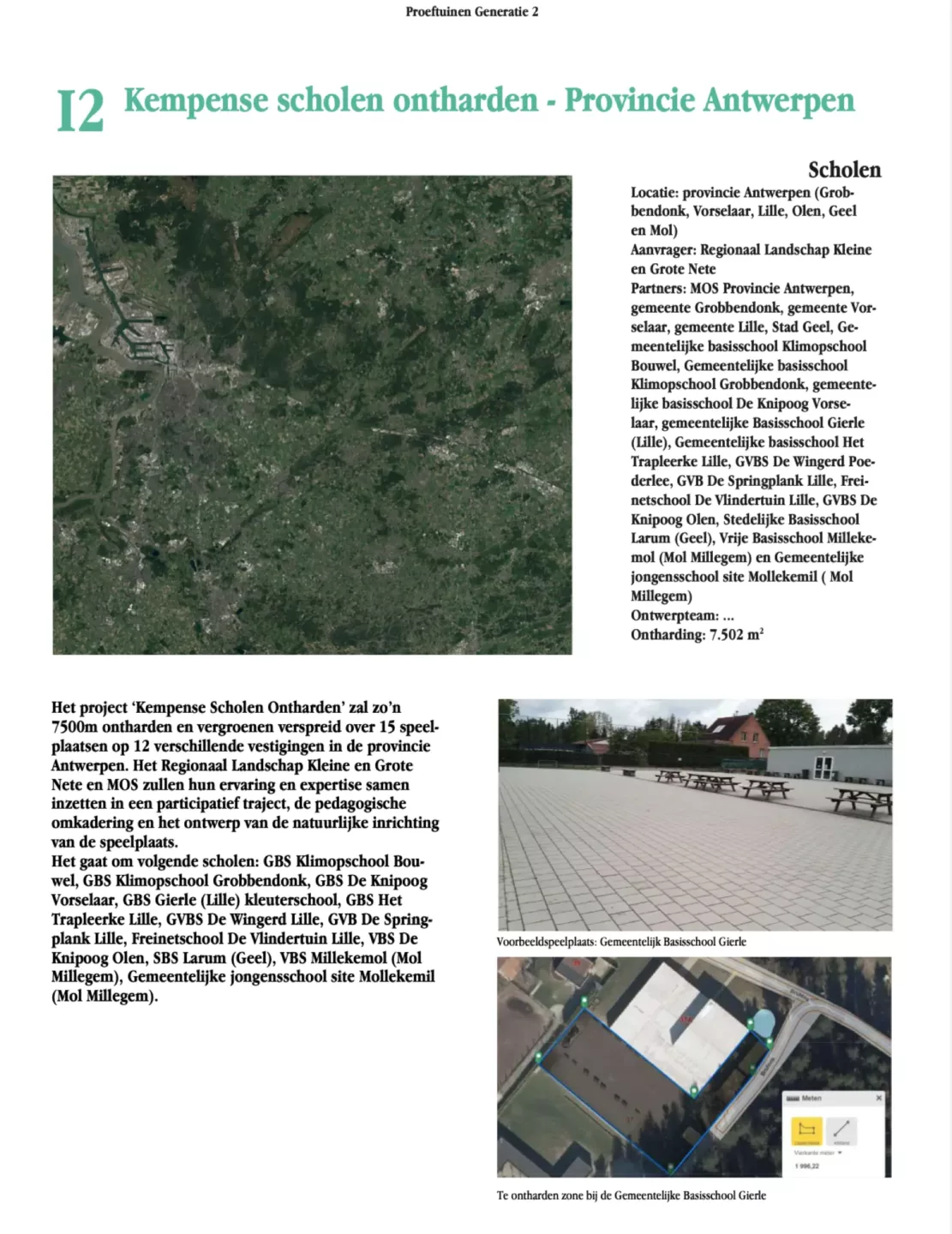
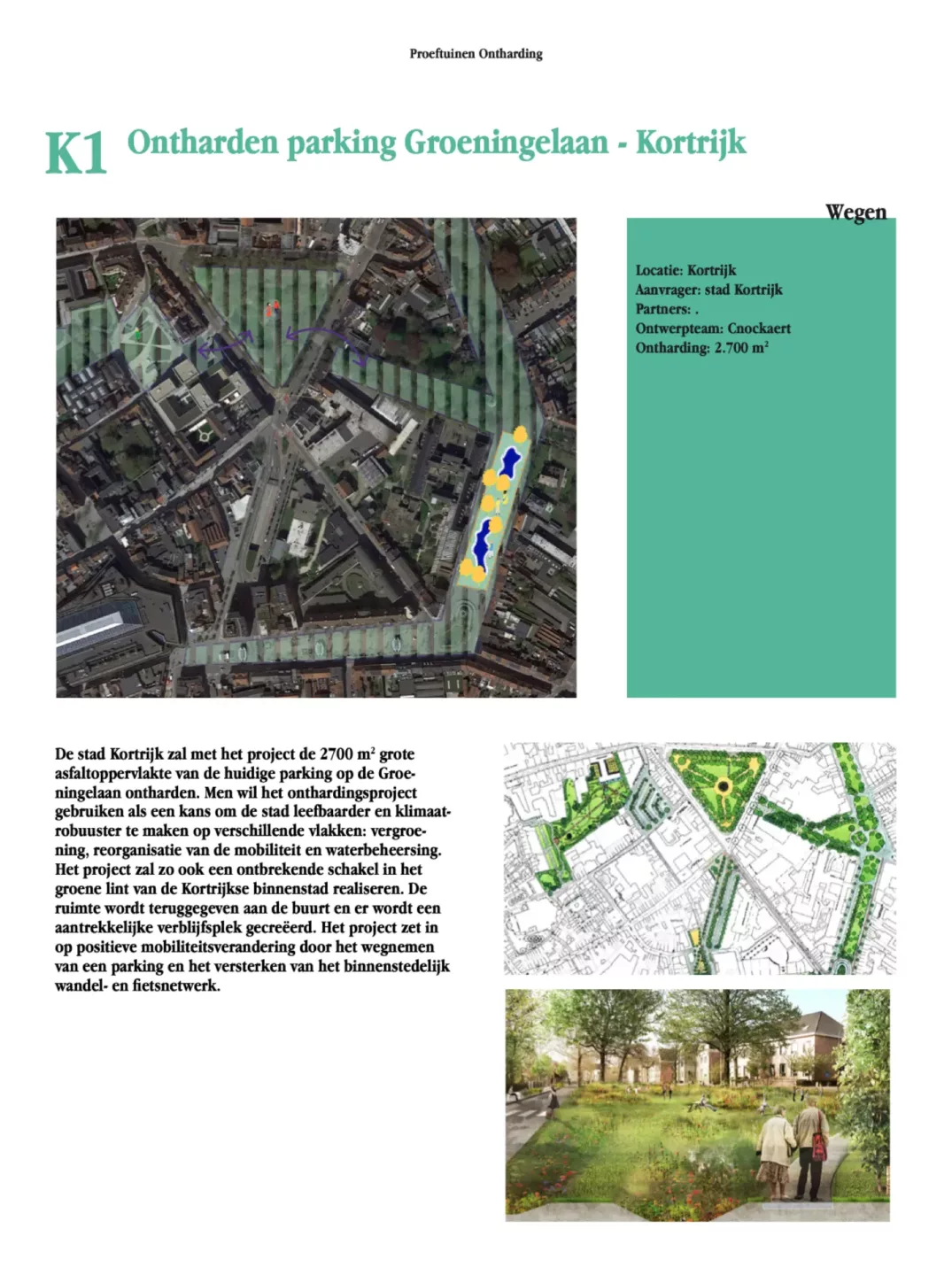
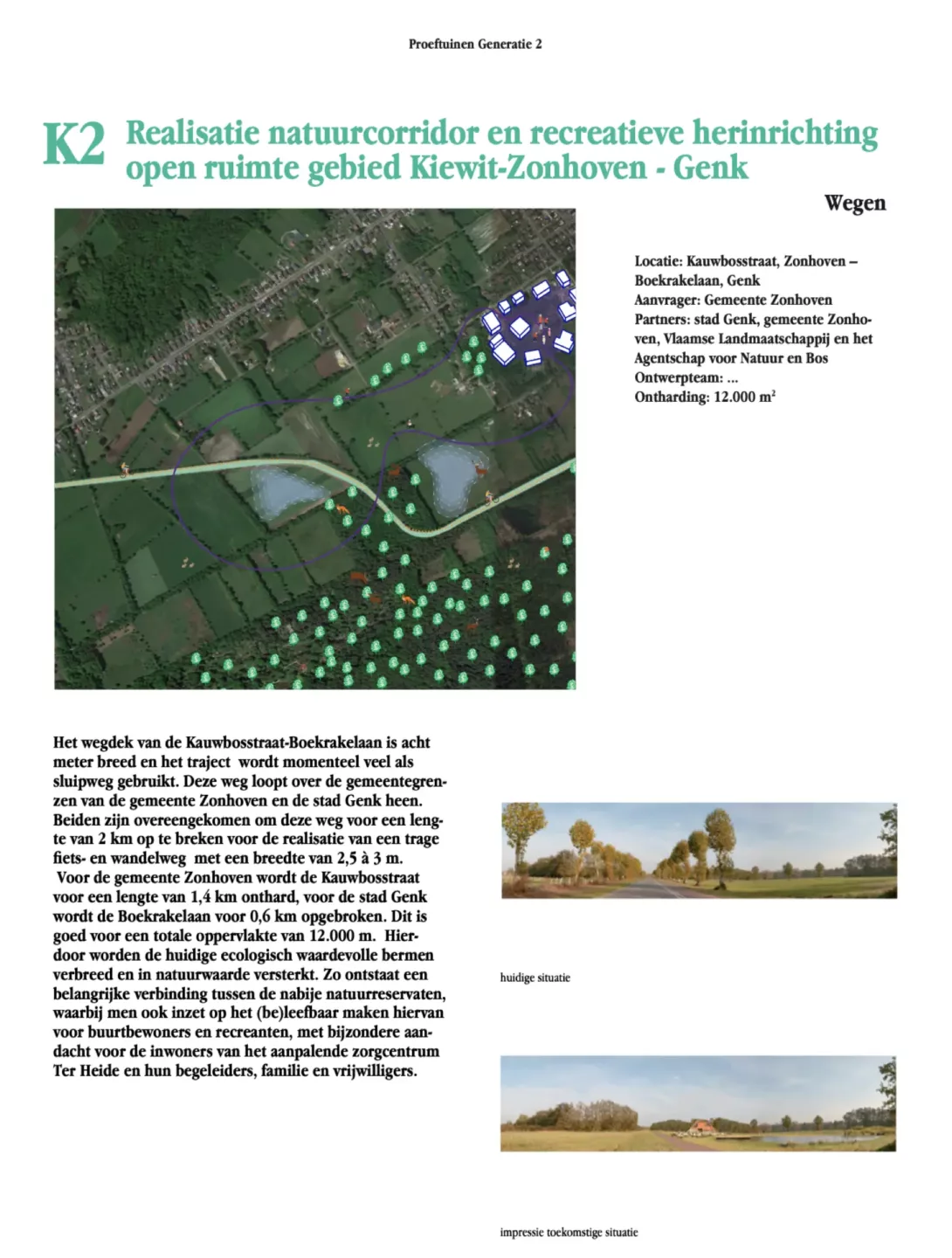
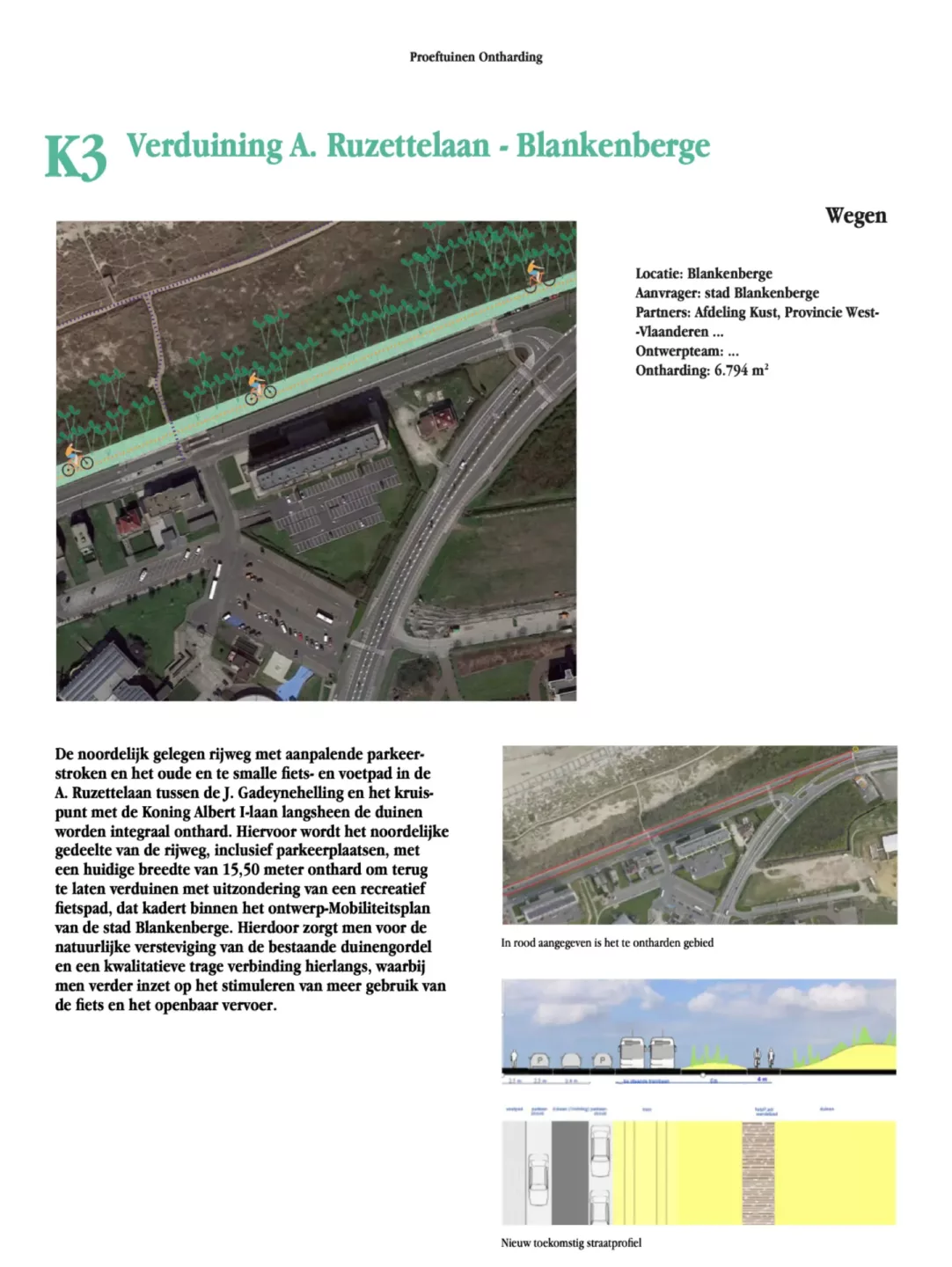

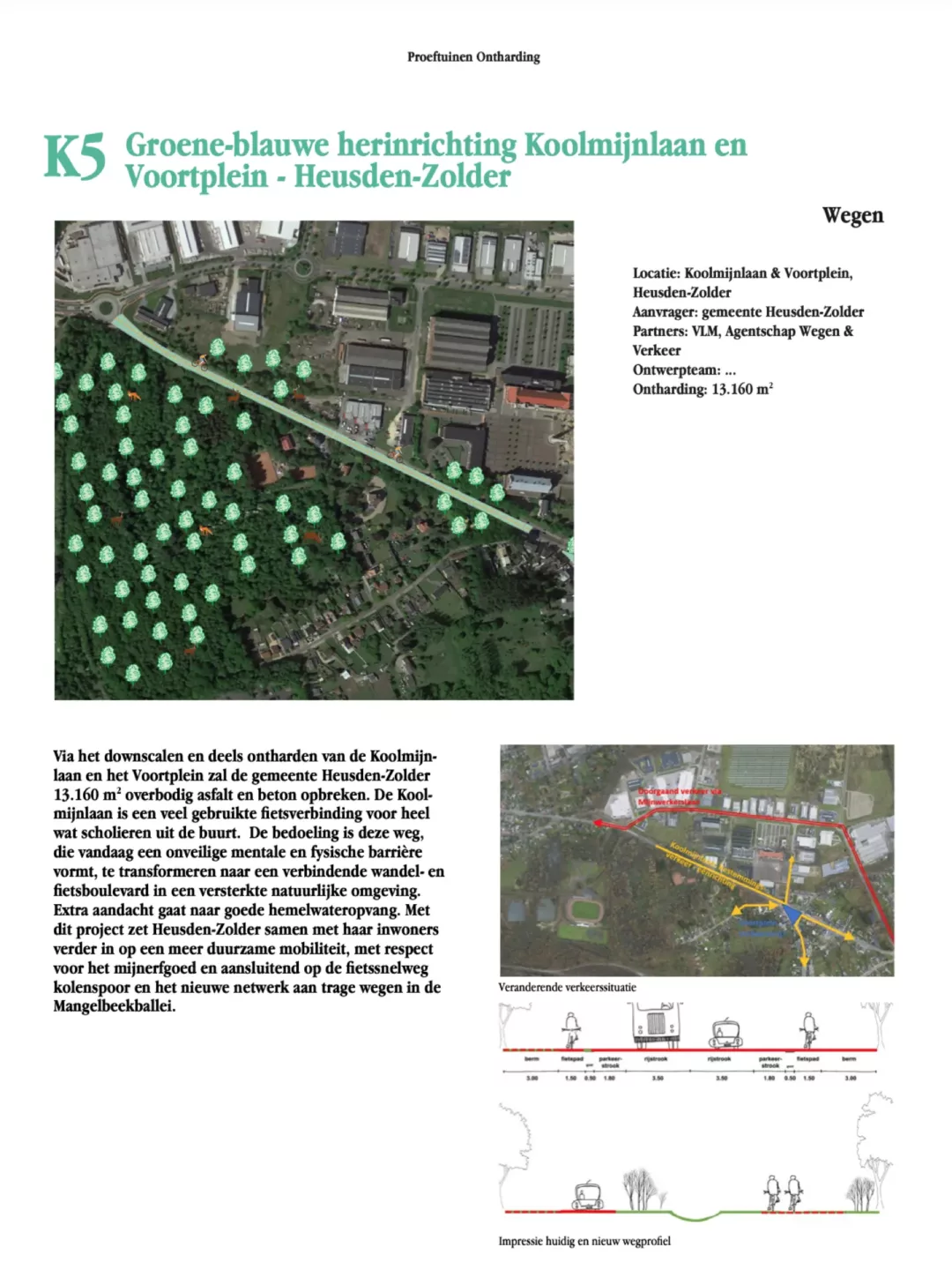
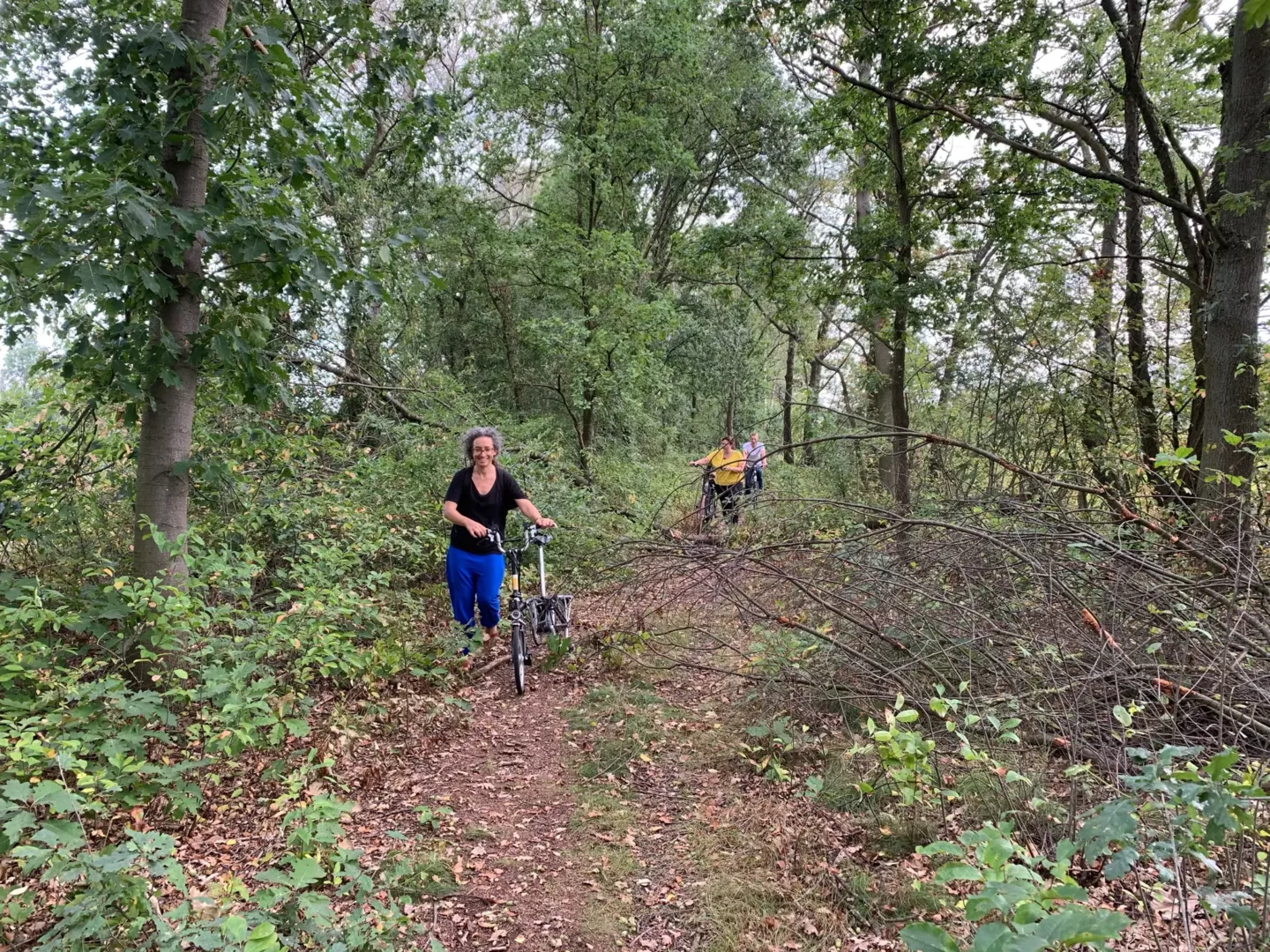
Proeftuinen Ontharding en Groenblauwe dooradering
In 2018, the Flemish Government launched an initiative inviting public authorities to submit projects focused on depaving. This call responded to the growing challenges of extreme weather events—linked to climate change—and the high proportion of paved surfaces in Flanders. These factors contribute to widespread drought and flooding during heavy rainfall. At the local level, this has fueled an increasing urgency to depave impermeable surfaces and restore the land’s capacity for water infiltration.
These depaving actions simultaneously offer opportunities to support high-quality biodiversity. However, seizing those opportunities requires a deeper understanding of ecological processes. The traditional approach to green space—dominated by purely aesthetic planting—no longer meets the pressing environmental demands. For this reason, participating projects were closely supported through guidance, workshops, and expert input, aiming to ensure the highest possible quality in both process and design, and to help these projects serve as ambassadors for a more ecological approach to public space.
Given our expertise in ecology, vegetation dynamics, and biodiversity, Plant en Houtgoed was appointed as ‘Biodiversity Expert’. In this role, we delivered lectures and mediated roundtable discussions with municipalities and cities, with the goal of raising awareness around the biodiversity potential embedded in every depaving project. In addition to guiding general principles, we were also asked to critically assess project designs and provide context-specific ecological advice.
To support this, we developed a ‘Biodiversity Tool’, offering an accessible way to assess and track biodiversity throughout a project’s trajectory—before, during, and after implementation. The tool uses a spider diagram structured around 10 axes of biodiversity, each representing a key dimension where quality nature can be supported, and where people also play an active role as stewards: Habitat size, Habitat diversity, Native species, Genetic diversity/origin, Connection to blue-green networks, Structural diversity of planting, Management as a driver of biodiversity appreciation, Educational measures, Species protection measures and Multiplication effect.
This approach helped participating authorities move beyond surface-level greening and toward a more ecologically robust and meaningful integration of nature in the urban fabric.
read more:
https://omgeving.vlaanderen.be/nl/aan-de-slag#paddle_components_text_block_083d7627-974c-4412-a36a-40a930b75b11